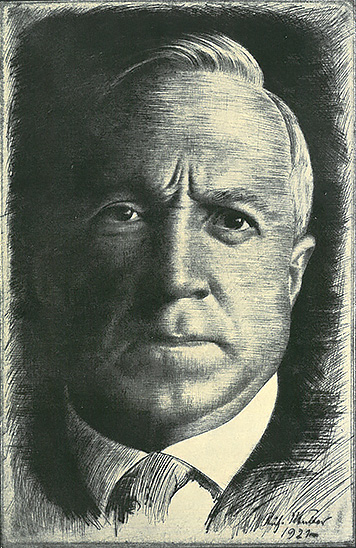Richard Müller
1874–1954
An Artist between Surrealism and Realism

|
Even as a student at the Academy of Art in Dresden, Richard Müller began creating a wholly unique cosmos of images in his drawings, etchings, and paintings that is said to have set him apart from the artistic currents of his time throughout his entire life. These surreal compositions and photo-realistic representations, peppered as they are with Old Master motifs and nightmarish juxtapositions, baffled – just as they fascinated – Müller‘s contemporaries all around the world. A lack of understanding of his work and the eventual defamation of Müller‘s name, coupled with his own inability to cope with the upheavals of modernity, later distorted people‘s view of his ingenious technique and the creative power of his oeuvre, however. It is therefore now time to reclaim this unjustly forgotten artist‘s works – with their Old Masterly perfection and symbolically-charged contents – from the cabinets of museums and connoisseurs and to discover them, anew, for the public.
|
- 1874
- On July 28, Richard Müller is born as the son of a Saxon weaver in the Bohemian town of Tschirnitz
- 1888
- Accepted at the early age of 14 into the painting school at the Royal Saxon Porcelain Manufacture in Meißen thanks to his unusual talent for drawing
- 1890
- Admitted to the Royal Academy of Art in Dresden; studies with Leonard Gey and Friedrich Leon Pohle
- 1893
- At age 19, leaves the conservative Academy and forms his own atelier in Dresden with Sascha Schneider and Hans Unger; first successful exhibition of animal studies; member of the secessionist Verein Bildender Künstler Dresden
- 1897
- Receives the Rome Prize from the Prussian Academy of Arts; Max Klinger and Ernst Moritz Geyger insire him to work with the media of etching; teaches at Guido Richter‘s private art school in Dresden; friendship with Hans Thoma and Franzvon Stuck
- 1898
- Ernst Seeger and Fritz Gurlitt publish the first portfolio of his graphic works; receives general acclaim as a painter as well; wins the Great Golden Medal of the city of Dresden at the World Fair in Paris
- 1900
- Marries the famous American concert singer Lillian Sanderson
- 1902
- Birth of his son, Adrian Lukas
- 1903
- Professor of Drawing at the Royal Academy of Art in Dresden; teaches George Grosz, Richard Scheibe, and Max Ackermann, among others
- 1904
- Appointed to the international jury of the World Fair in St. Louis
- 1905
- Member of the Alliance of German Artists, declines a professorship in Berlin
- 1914
- Conscripted into the military as a draftsman on the Western front
- 1915
- Called back to the Academy in Dresden
- 1920
- Became founding member of the Deutsche Kunstgesellschaft
- 1921
- Special exhibition of Müller‘s work in Dresden; Franz Hermann Meißner publishes the first monograph on Müller; the artist‘s son markets his works
- 1924
- Appointed as Director of Studies at the Dresden Academy of Art
- 1933
- Nominated as Rector of the Academy; becomes a member of the Nazi Party; pens virulent article on the occasion of the Degenerate Art exhibition in Dresden
- 1935
- Instigates his expulsion from the Party; dismissed as Rector, but exhibits occasionally in the Große Deutsche Kunstausstellungen at the Haus der Kunst in Munich
- 1948
- Membership in the GDR artists‘ trade union is refused; lives on chance commissions after his defamation as a persona non grata
- 1954
- On May 7, Richard Müller dies, lonely, at his home in Dresden-Loschwitz
